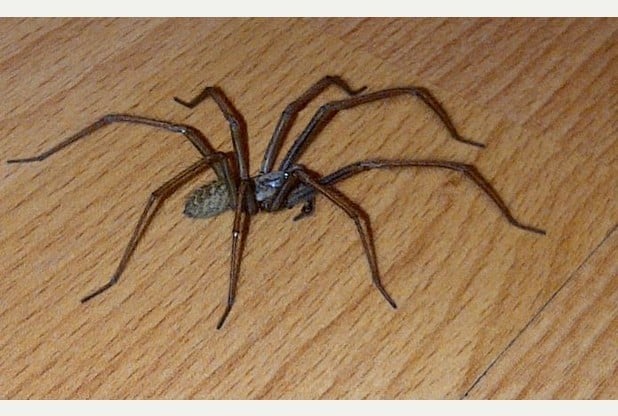Huge house spiders are moving in to Croydon homes and laying eggs
SPIDERS that can grow to the size of a mouse are moving into Croydon homes, scientists have said.
Spider experts are warning Croydon residents about a breed of these eight-legged freaks which are taking up residence in homes across the borough.
Millions of giant spiders, which can grow as big as a mouse, are moving into houses across the country in order to find a warm dry place to mate – and each female can lay hundreds of eggs.
Arachnologist Chris Ayre believes the Giant House Spiders will flock to British homes this month in a bid to find a mate and escape the wet weather.
The spiders, whose painful bite is similar to a bee sting if it can pierce the skin, can grow up to 12 centimetres long.
Chris said: “Giant house spiders are the Golden Retrievers of the spider world, because they are much less shy than their relatives.”
The spiders, are among the largest spiders in Europe, but fortunately their fangs are not often long enough to pierce human skin.
How to identify a Giant House spider
• Look out for sheet-like cobwebs in neglected corners of the room. These spiders spin them and wait close by for unsuspecting flies to get caught.
• They have long legs.
• Their body – legs, palps and abdomen are dark and conspicuously hairy.
• Their coloration is mainly dark brown, with earthy tones of brown and muddy red or yellow.
• Often they will have a lighter marking on the sternum, with three light spots on each side.
• There may be a lighter middle line with six “spots” on each side at the tip of its rear end.
• Female body size can reach 18.5 millimetres (0.73 in) in length with males having a slightly smaller body at around 12 to 15 millimetres (0.47 to 0.59 in) in length.
• The female leg span is typically around 45 millimetres (1.8 in), while it is highly variable for the male, with spans between 25 to 75 millimetres (0.98 to 2.95 in) being common.
• Its eight eyes are of equal size and are arranged in two rows.
• They prefer houses and buildings.
What to do when you find Giant House Spider in your home –
• House spiders help to keep populations of flies and pests in check in houses and gardens.
• The Wildlife Trust says the best thing to do is catch a Giant House Spider and place it outside if you can’t stand it in your home.
• The Trust also suggests hanging a towel over the side of the bath to help roaming males escape.



![P110 – C.Bubbler – Knife Sentence [Spoken Word]](https://osmvision.co.uk/wp-content/uploads/2019/03/p110-c-bubbler-knife-sentence-sp-300x169.jpg)





No comments yet... Be the first to leave a reply!